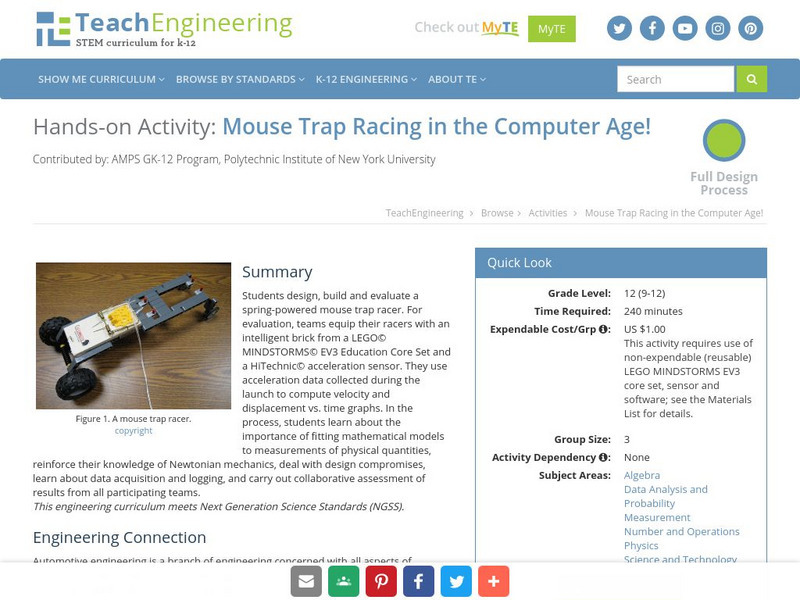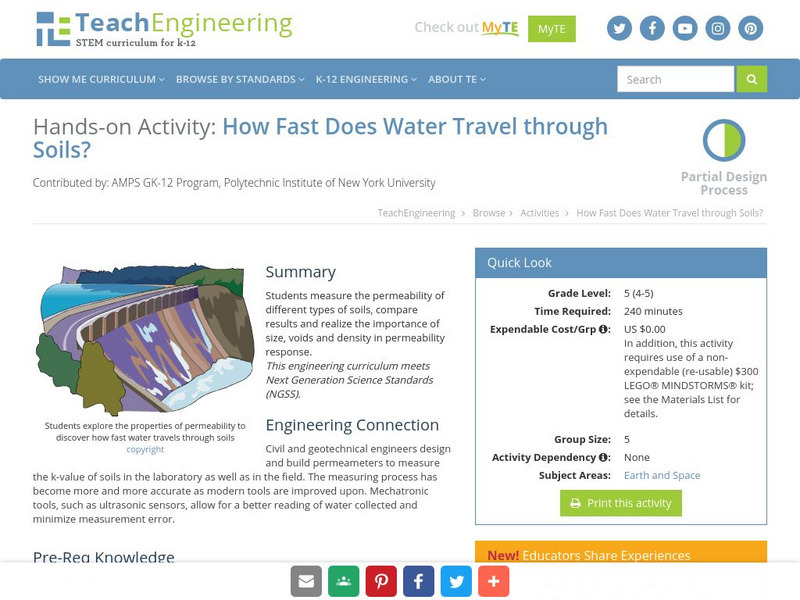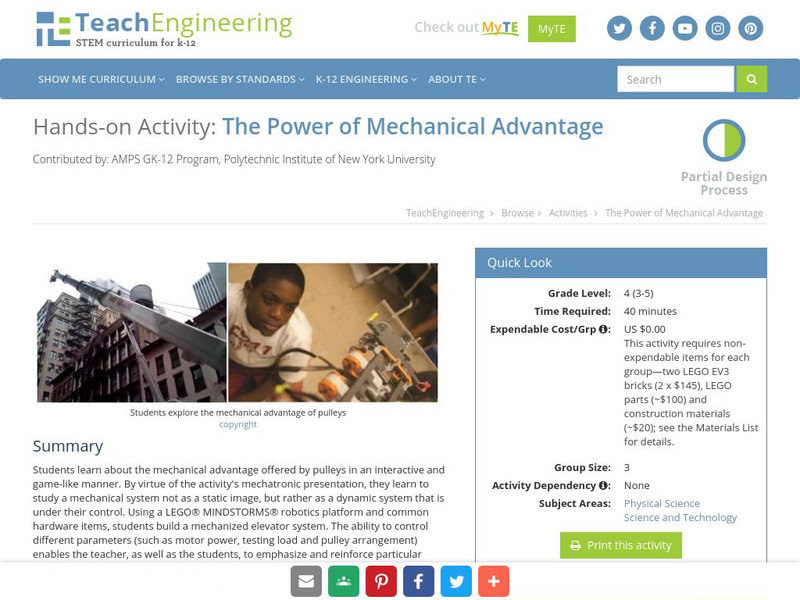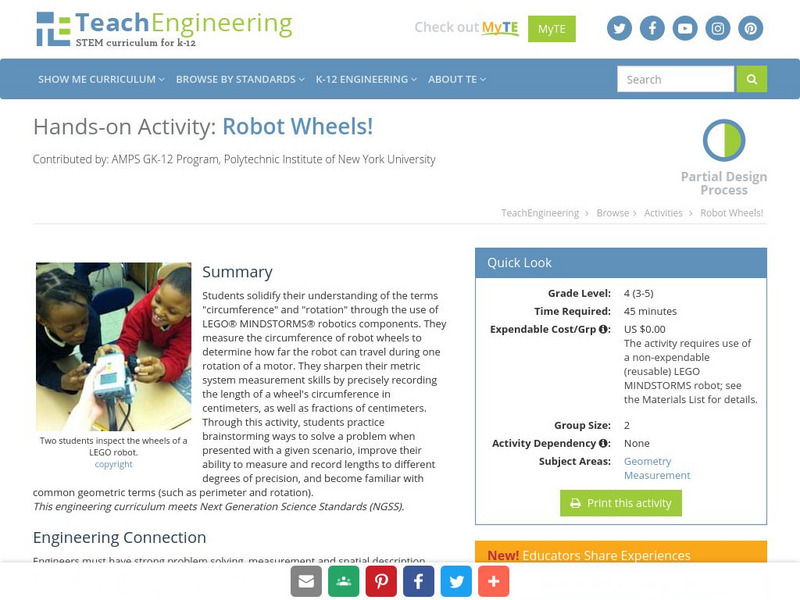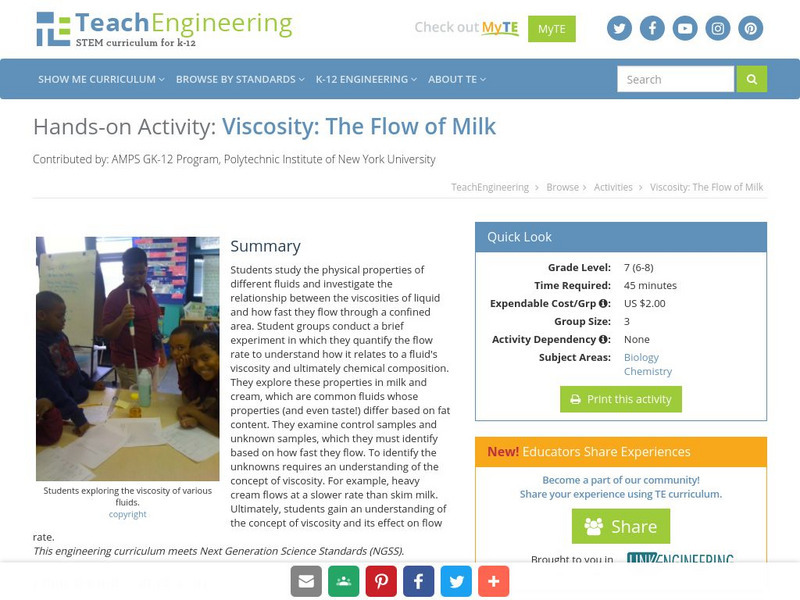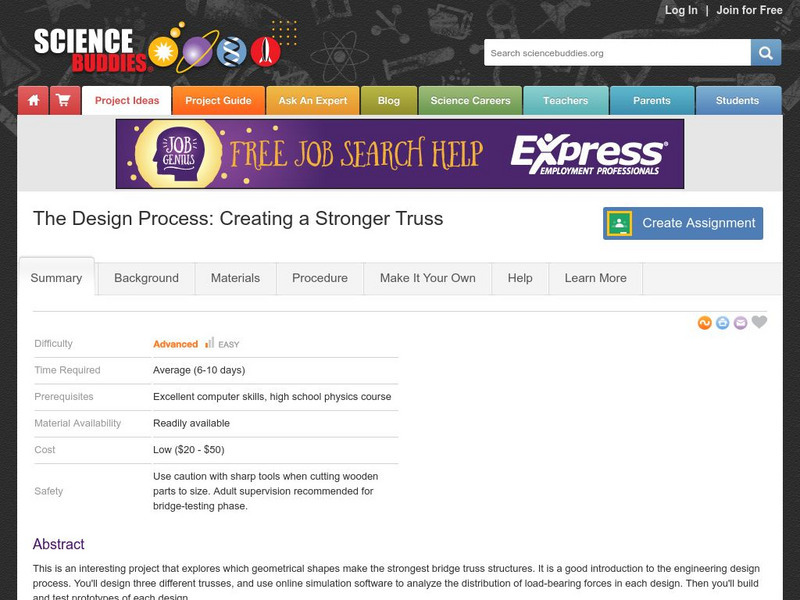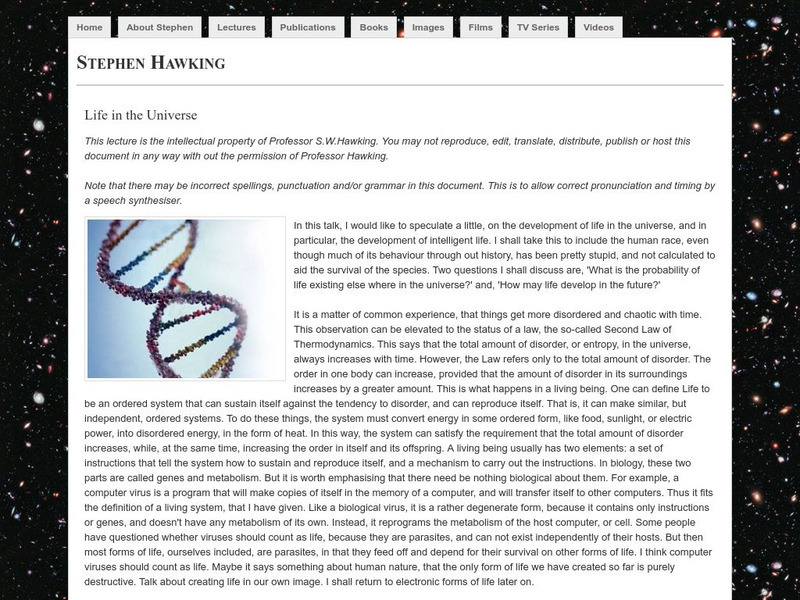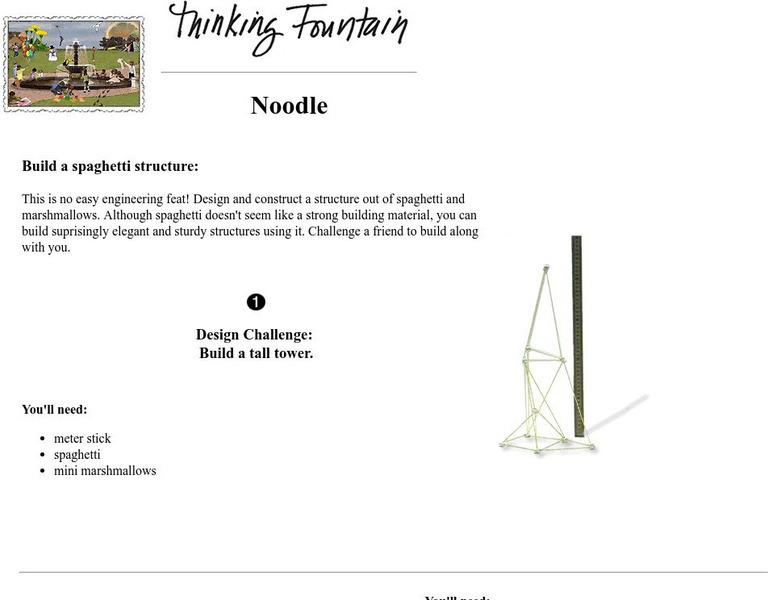TeachEngineering
Teach Engineering: Means, Modes, and Medians
Students experience data collection, analysis and inquiry in this LEGO MINDSTORMS NXT -based activity. They measure the position of an oscillating platform using a ultrasonic sensor and perform statistical analysis to determine the mean,...
TeachEngineering
Teach Engineering: Mouse Trap Racing in the Computer Age!
Students design, build and evaluate a spring-powered mouse trap racer. For evaluation, teams equip their racers with an intelligent brick from a LEGO MINDSTORMS NXT Education Base Set and a HiTechnic acceleration sensor. They use...
TeachEngineering
Teach Engineering: How Fast Does Water Travel Through Soils?
Students measure the permeability of different types of soils, compare results and realize the importance of size, voids and density in permeability response.
TeachEngineering
Teach Engineering: The Power of Mechanical Advantage
Students learn about the mechanical advantage offered by pulleys in an interactive and game-like manner. By virtue of the activity's mechatronic presentation, they learn to study a mechanical system not as a static image, but rather as a...
TeachEngineering
Teach Engineering: Robo Clock
Students learn various topics associated with the circle through studying a clock. Topics include reading analog time, understanding the concept of rotation (clockwise vs. counter-clockwise), and identifying right angles and straight...
TeachEngineering
Teach Engineering: How Far Does the Robot Go?
Students practice their multiplication skills using robots with wheels built from LEGO MINDSTORMS NXT kits. They brainstorm distance travelled by the robots without physically measuring distance and then apply their math skills to...
TeachEngineering
Teach Engineering: Robotic Perimeter
Students learn and practice how to find the perimeter of a polygonal shape. Using a ruler, they measure model rooms made of construction paper walls. They learn about other tools, such as a robot, that can help them take measurements....
TeachEngineering
Teach Engineering: Robot Wheels!
Students solidify their understanding of the terms "circumference" and "rotation" through the use of LEGO MINDSTORMS NXT robotics components. They measure the circumference of robot wheels to determine how far the robot can travel during...
TeachEngineering
Teach Engineering: Energy of Motion
By taking a look at the energy of motion all around us, students learn about the types of energy and their characteristics. They first learn about the two simplest forms of mechanical energy: kinetic and potential energy, as illustrated...
TryEngineering
Try Engineering: Making Sense of Sensors
Lesson explore sensors focusing on ones that measure humidity. Students work in teams to design, build, test, and evaluate a hygrometer which was made out of everyday materials to measure humidity levels.
Other
National Academy of Engineering: Teaching Engineering Ethics
Website contains thirty-two cases that represent a wide variety of ethical issues that arise in the engineering practice. Each case study includes background information as well as expert commentary.
TeachEngineering
Teach Engineering: Viscosity: The Flow of Milk
Students study the physical properties of different fluids and investigate the relationship between the viscosities of liquid and how fast they flow through a confined area. Student groups conduct a brief experiment in which they...
University of Houston
University of Houston: Engines of Our Ingenuity: No. 381: Civil War Submarine
A short discussion about the invention of the submarine and its use by both the Confederates and the Federals in the Civil War. This is a transcript of an accompanying radio broadcast.
American Geosciences Institute
American Geosciences Institute: Earth Science Week: Engineer a Satellite
For this lesson, students will construct a scale model of a satellite by researching what scientific instrument to put on it and how to power it.
Other
Medium: Software Engineering: Software Process and Software Process Models
Understand the software process and software process models.
Science Buddies
Science Buddies: The Design Process: Creating a Stronger Truss
This is an interesting project that explores which geometrical shapes make the strongest bridge truss structures. It is a good introduction to the engineering design process. You'll design three different trusses, and use online...
National Science Teachers Association
National Science Teachers Association: Egg Drop and Impulse
This page offers a detailed description of and a link to a set of lessons that will assist teachers in targeting NGSS standard HS-PS2-3. Students investigate momentum and impulse and are challenged to solve an engineering problem that is...
National Science Foundation
National Science Foundation: Find Funding
An A to Z listing of grants offered for research in science, math, and engineering.
Thinkport Education
Thinkport: Water, Water, Everywhere?
Students learn about global access to clean water and apply the engineering design process to develop a solution to purify water.
Other
Stephen W. Hawking: Lectures: Life in the Universe
This lecture covers the topic of life now and into the future, including the role genetic engineering will play.
Technovation
Curiosity Machine: Challenges: Build a Rube Goldberg Machine
Build a machine that accomplishes a task in an inefficient way with this Rube Goldberg challenge. Find some tips and a place to document your engineering process on this site.
Technovation
Curiosity Machine: Challenges: Make a Pine Cone
Using cardboard, popsicle sticks, rubber bands, and strings create a pine cone that opens and closes. This site contains lesson plans, tips, and a place for students to document their engineering design process.
Science Museum of Minnesota
Thinking Fountain: Noodle: Build a Spaghetti Structure
Design and construct a structure out of spaghetti and marshmallows. Although spaghetti doesn't seem like a strong building material, you can build surprisingly elegant and sturdy structures using it.
Other
Uss Constitution Museum: Room to Set Sail
This is a USS Constitution Museum resource that has learners compare the area of the size of the sails of the USS Constitution as it compares to their classroom.



